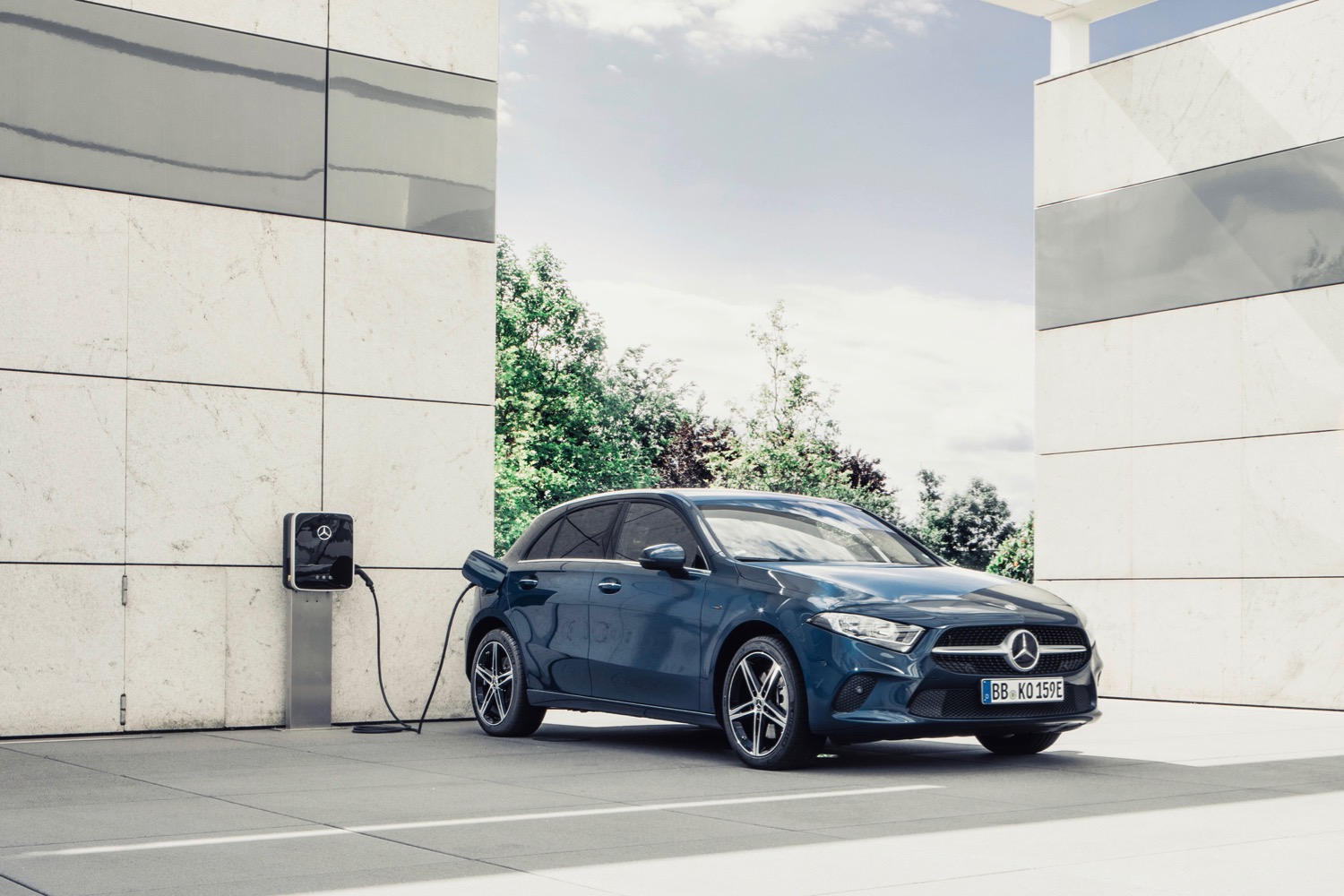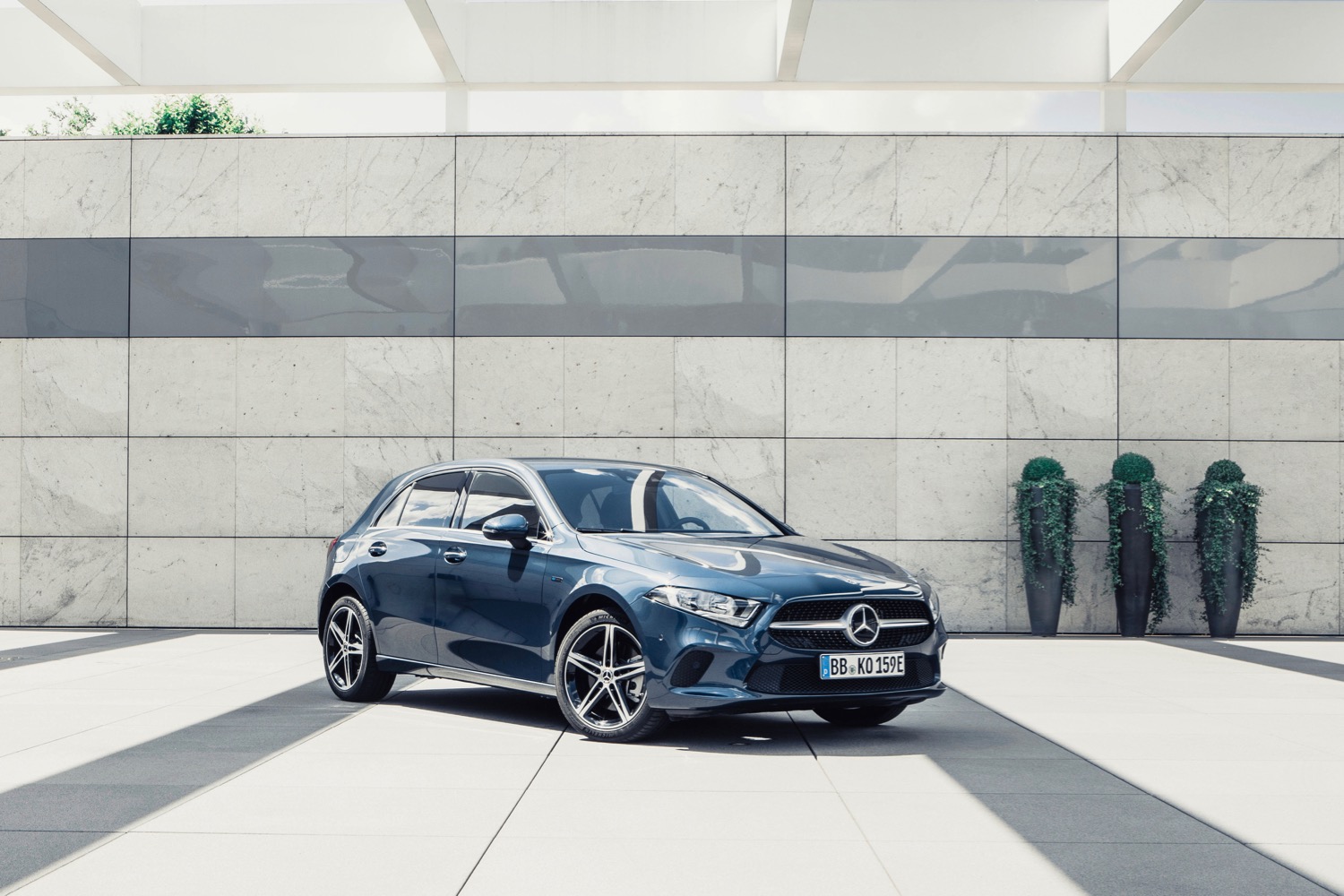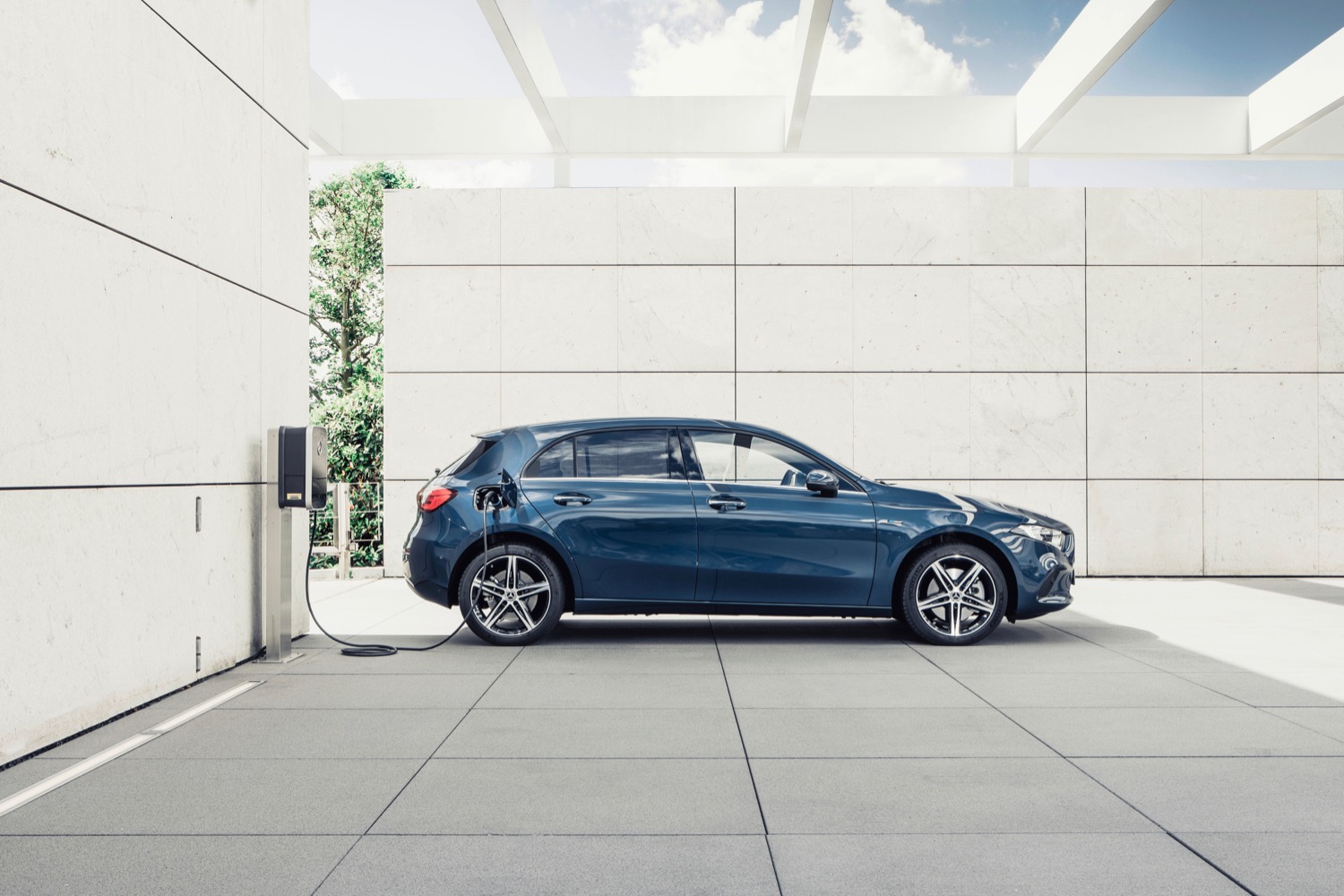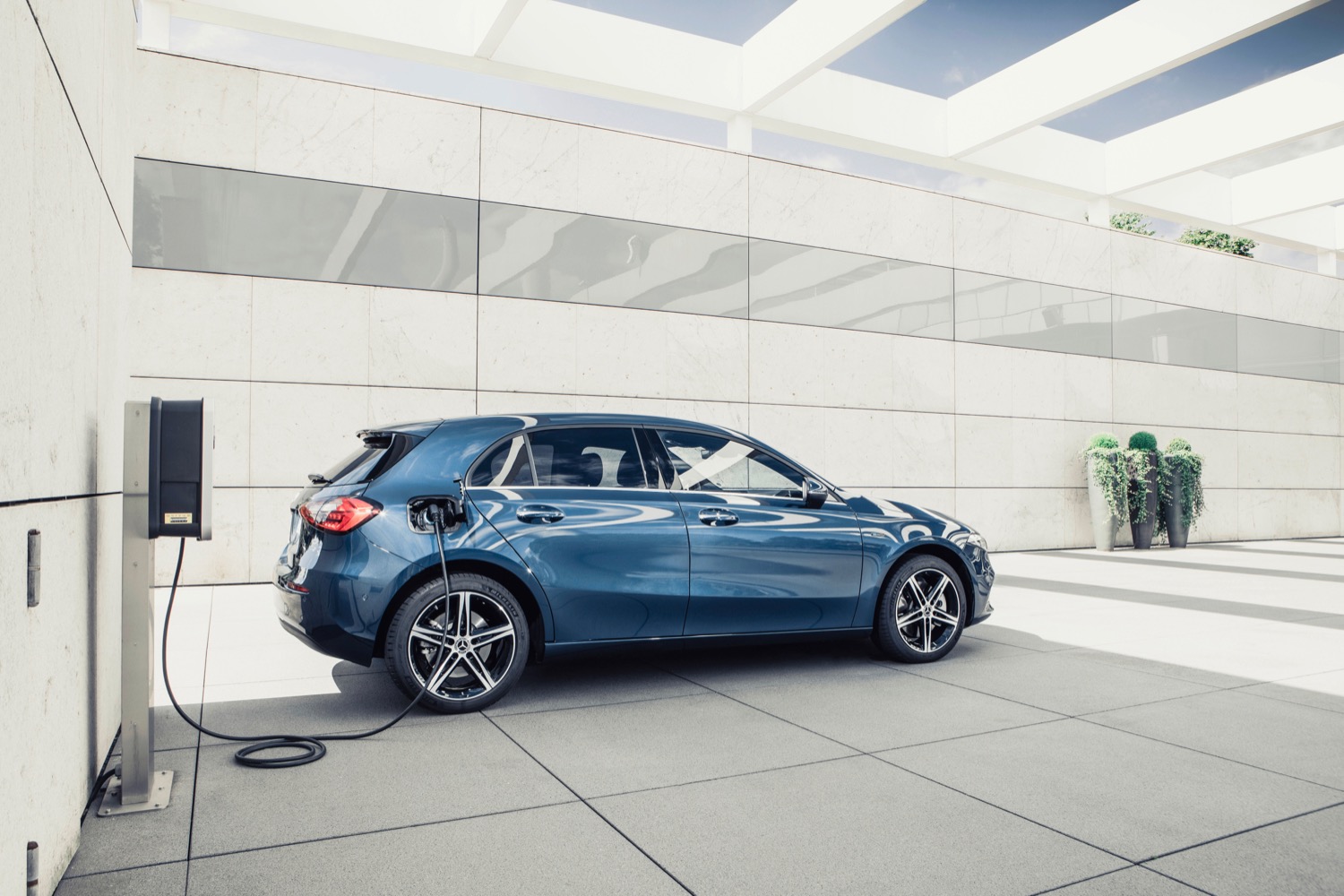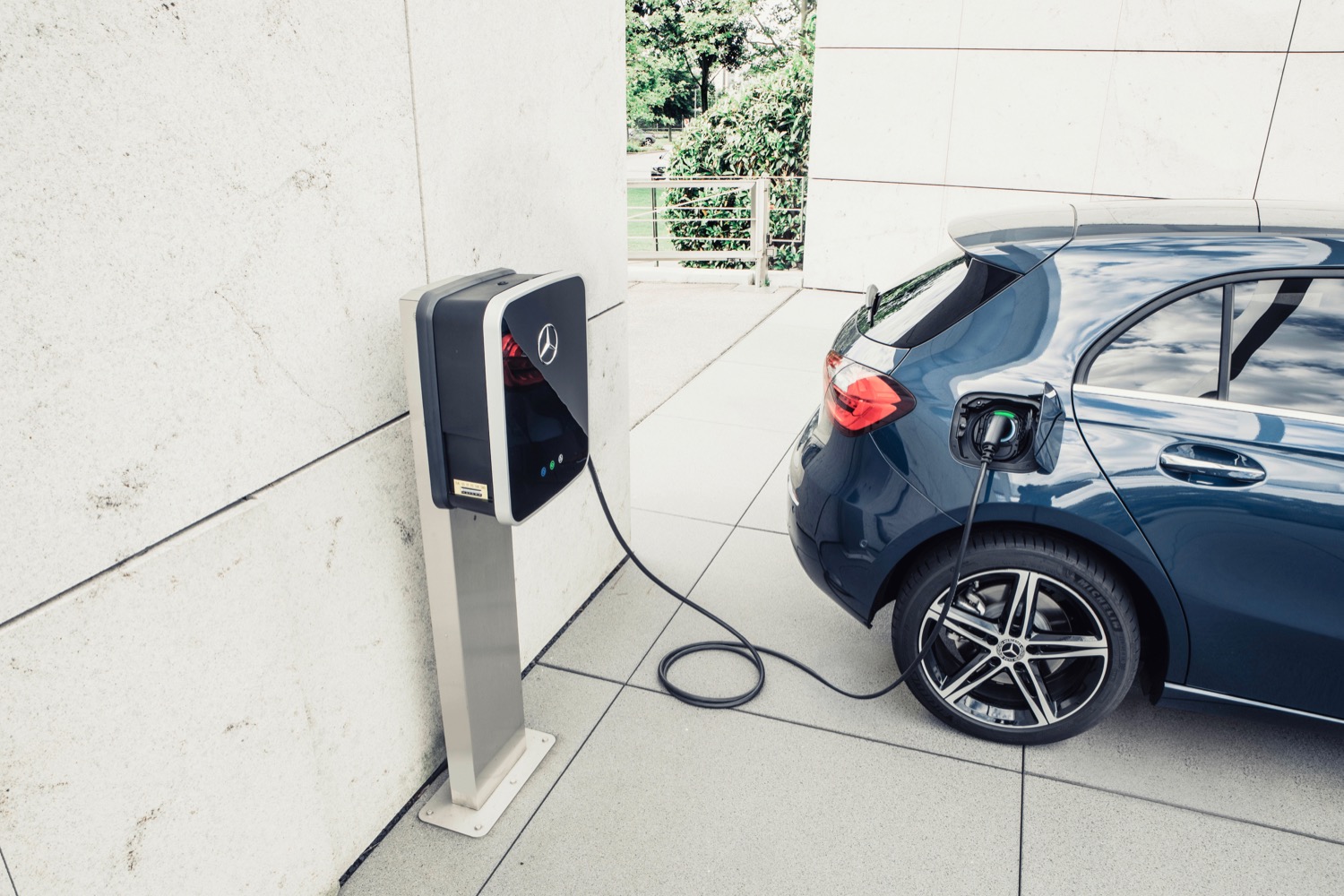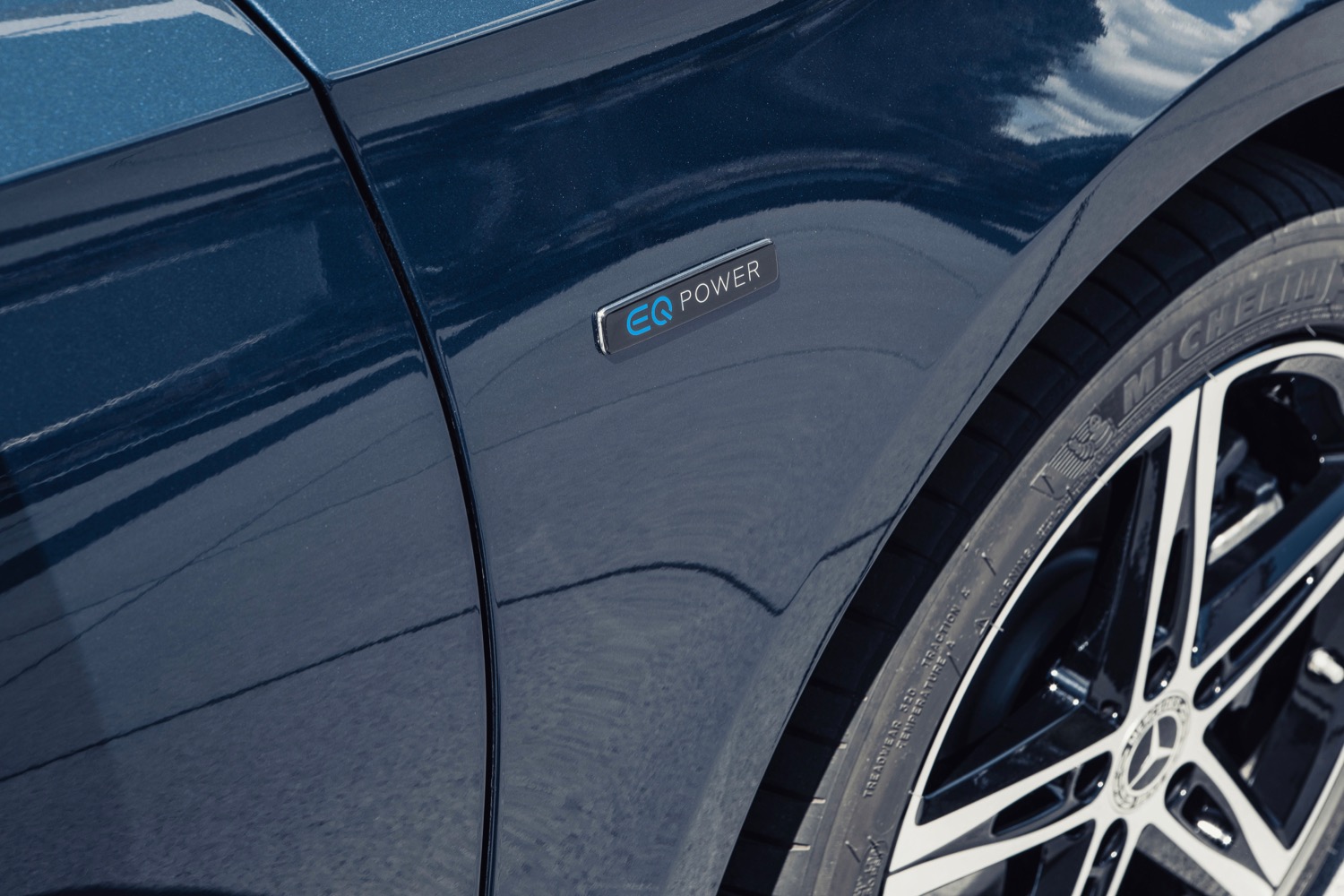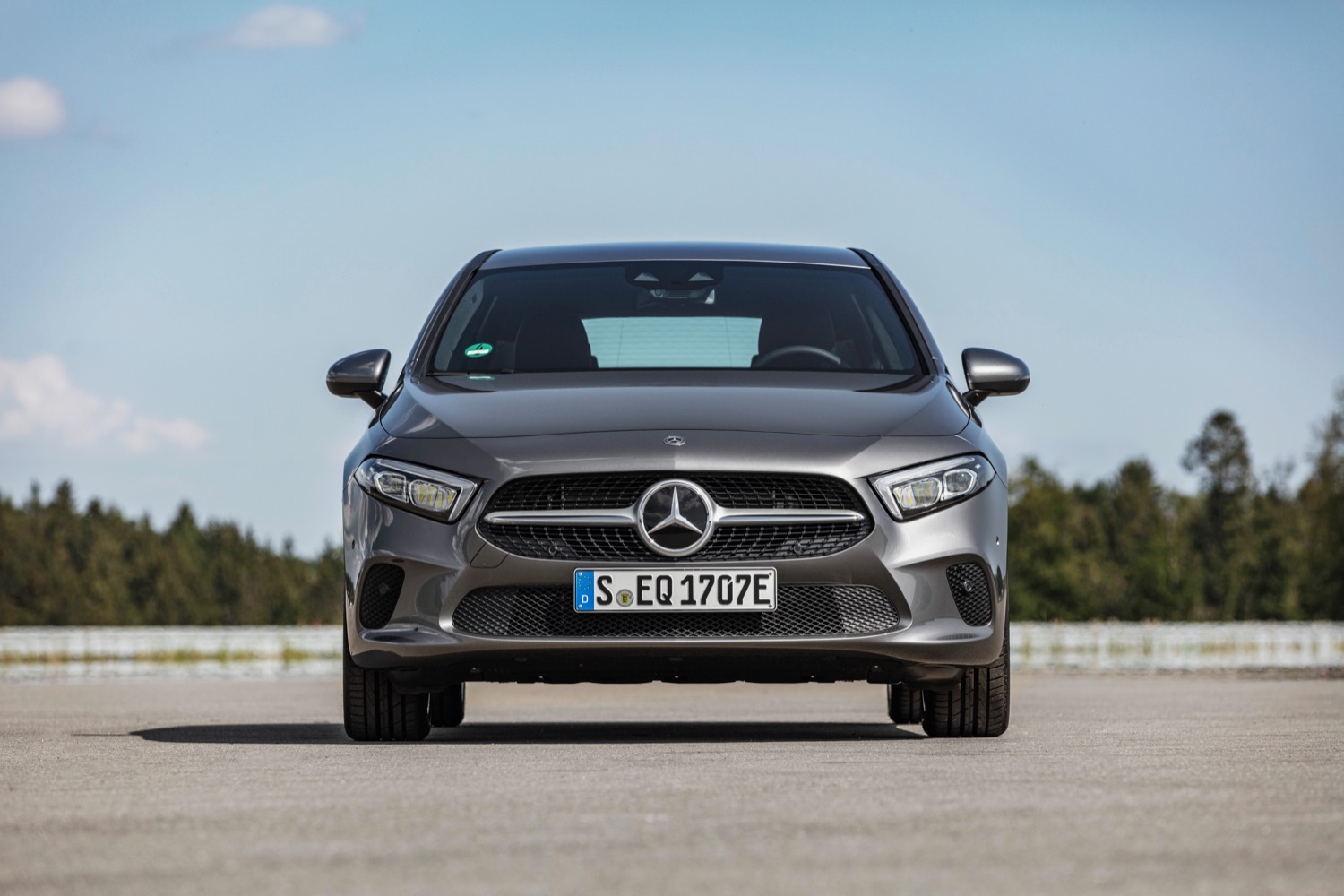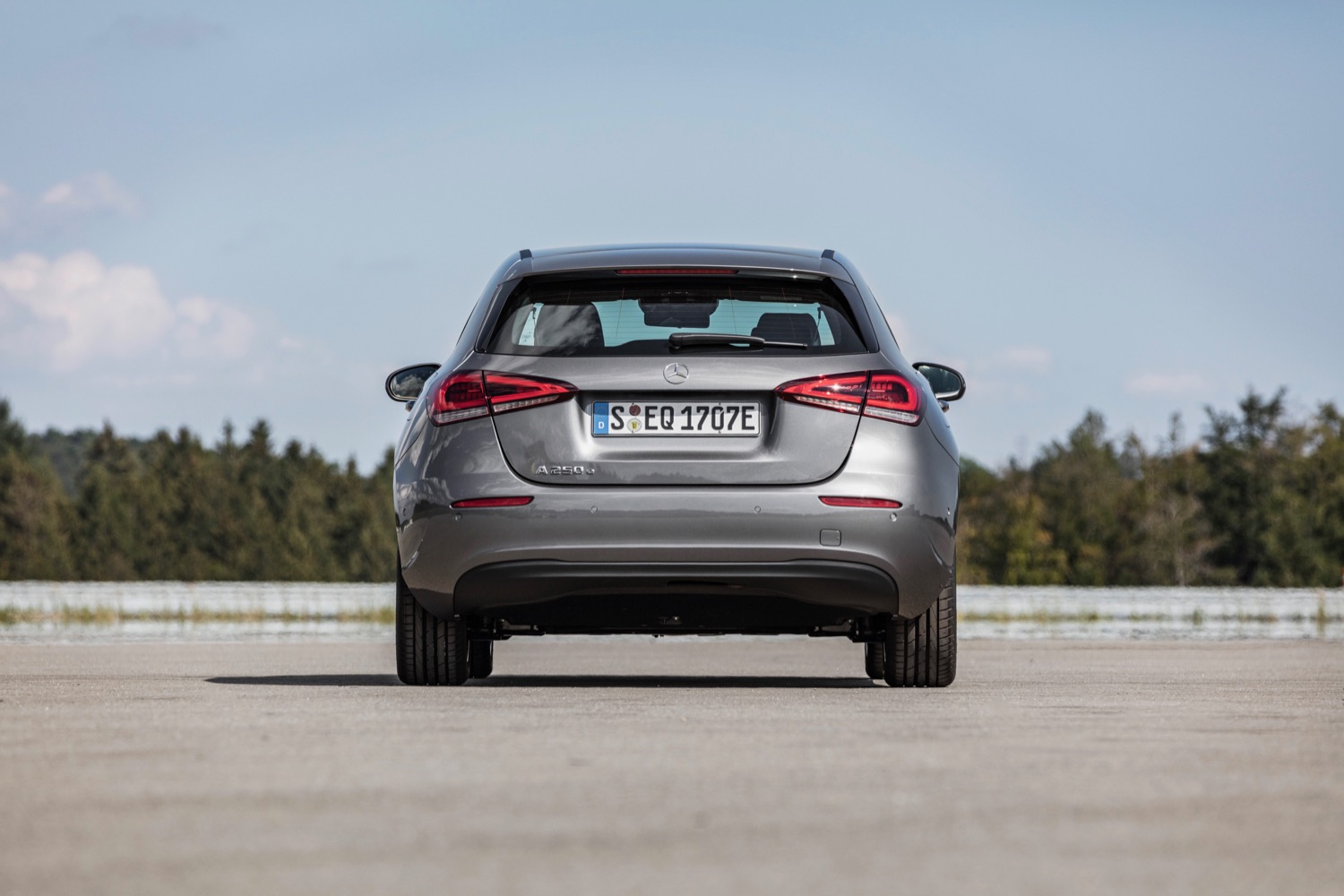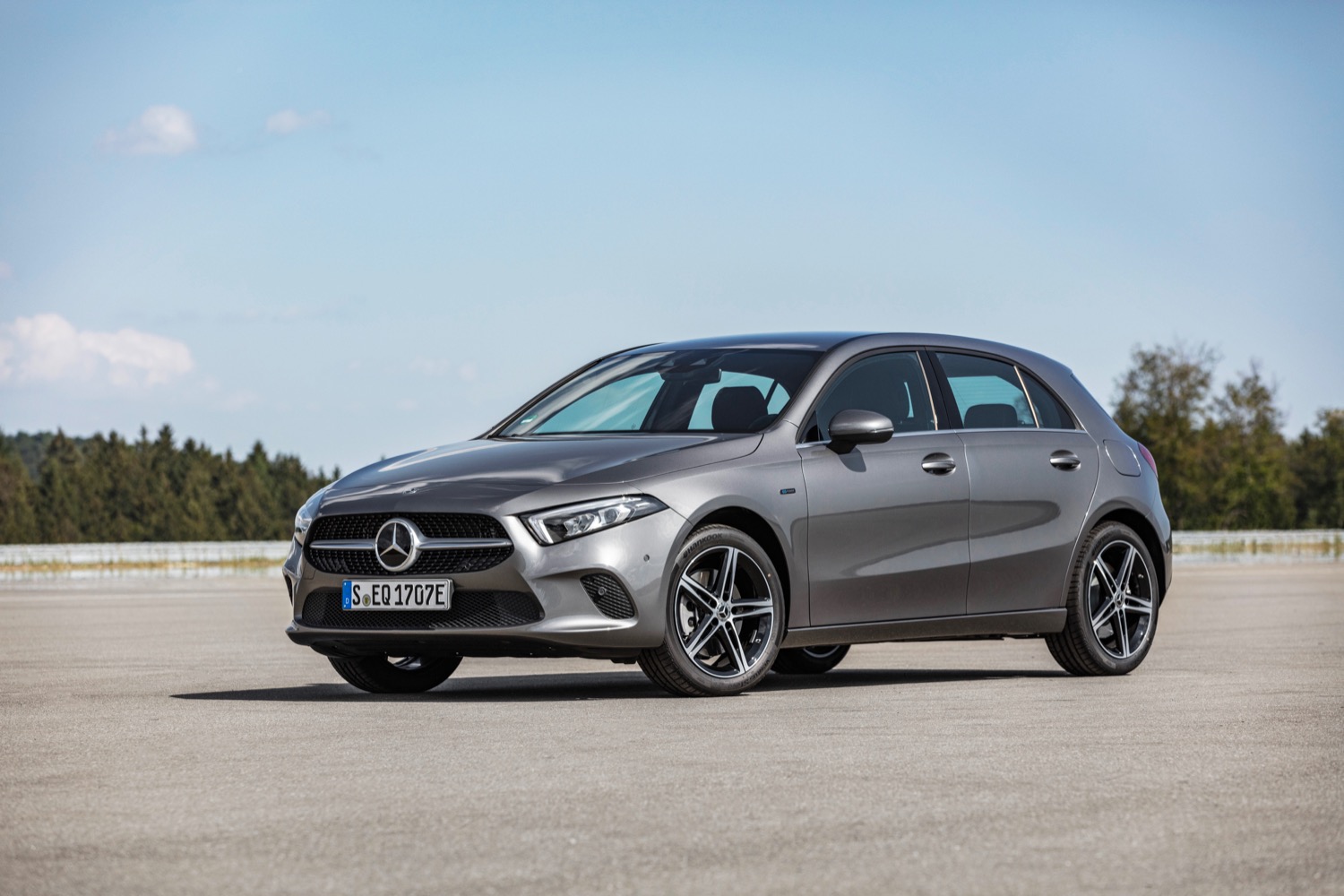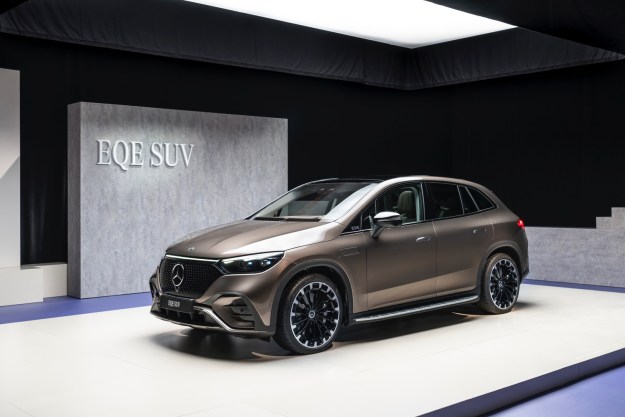Mercedes-Benz is adding plug-in hybrid powertrains to its compact models. In Europe, the recently redesigned A-Class sedan and hatchback will soon be available with a plug-in hybrid option, as will the B-Class pseudo-minivan. While the A-Class sedan is sold in the United States (with the related CLA on the way), Mercedes hasn’t confirmed availability of the plug-in hybrid model yet.
The plug-in hybrid A-Class is designated as the A250e. Its powertrain consists of a 1.3-liter four-cylinder gasoline engine, and an eight-speed dual-clutch transmission with an integrated electric motor. Total system output is 217 horsepower and 332 pound-feet of torque, which is sent to the front wheels. The A250e hatchback will do 0 to 62 mph in 6.6 seconds, and reach a top speed of 146 mph, according to Mercedes. Corresponding figures for the sedan are 6.7 seconds and 149 mph.
The electric motor also serves as the gasoline engine’s starter, similar to the mild-hybrid powertrains used in other Mercedes models. To make room for the 15.6-kilowatt-hour battery pack, the exhaust exits from under the floor at the center of the car, rather than going all the way to the back. The fuel tank is also wedged between the rear wheels, helping to free up more space.
Mercedes quoted an electric-only range of over 40 miles, but that’s using the European NEDC testing cycle. The U.S. Environmental Protection Agency testing cycle would likely produce a lower number. Top speed in electric mode is limited to 87 mph. To help drivers maximize efficiency, the A250e can use its navigation system to plot when to use electric power. Mercedes estimates that a full recharge will take one hour and 45 minutes using a 7.4-kilowatt Level 2 AC charging station. The A50e is also equipped for DC fast charging, which can give an 80-percent charge in about 25 minutes, according to Mercedes.
Mercedes wants to have 20 plug-in hybrids in its global lineup by 2020. It already has plug-in hybrid versions of the C-Class, E-Class, and S-Class sedans, as well as the GLC crossover, but not every model is available in every market. Following the launch of the A-Class and B-Class plug-ins, the GLE will be the next model to get the plug-in hybrid treatment, Mercedes has confirmed.
Editors' Recommendations
- Mercedes G580 electrifies an off-road icon
- 2025 Hyundai Tucson Plug-In Hybrid gets improved tech features
- Part plug-in, part dragster, the Mercedes-AMG GLC63 is an SUV of many faces
- 2024 Mercedes-AMG S63 E Performance first drive review: high-performance plug-in
- Mercedes-Maybach EQS SUV is old-school luxury — electrified
